Understanding the Role of Coordination in Home-Based Healthcare
In recent years, the need for seamless collaboration between home health care professionals and physicians has become paramount in delivering high-quality, patient-centered care. Coordination across various providers ensures safety, improves health outcomes, and minimizes healthcare costs, particularly for patients with complex or chronic conditions. This article explores the processes, strategies, and models that underpin effective care coordination, revealing how these practices contribute to better patient experiences and outcomes.
Fundamentals of Care Coordination in Healthcare
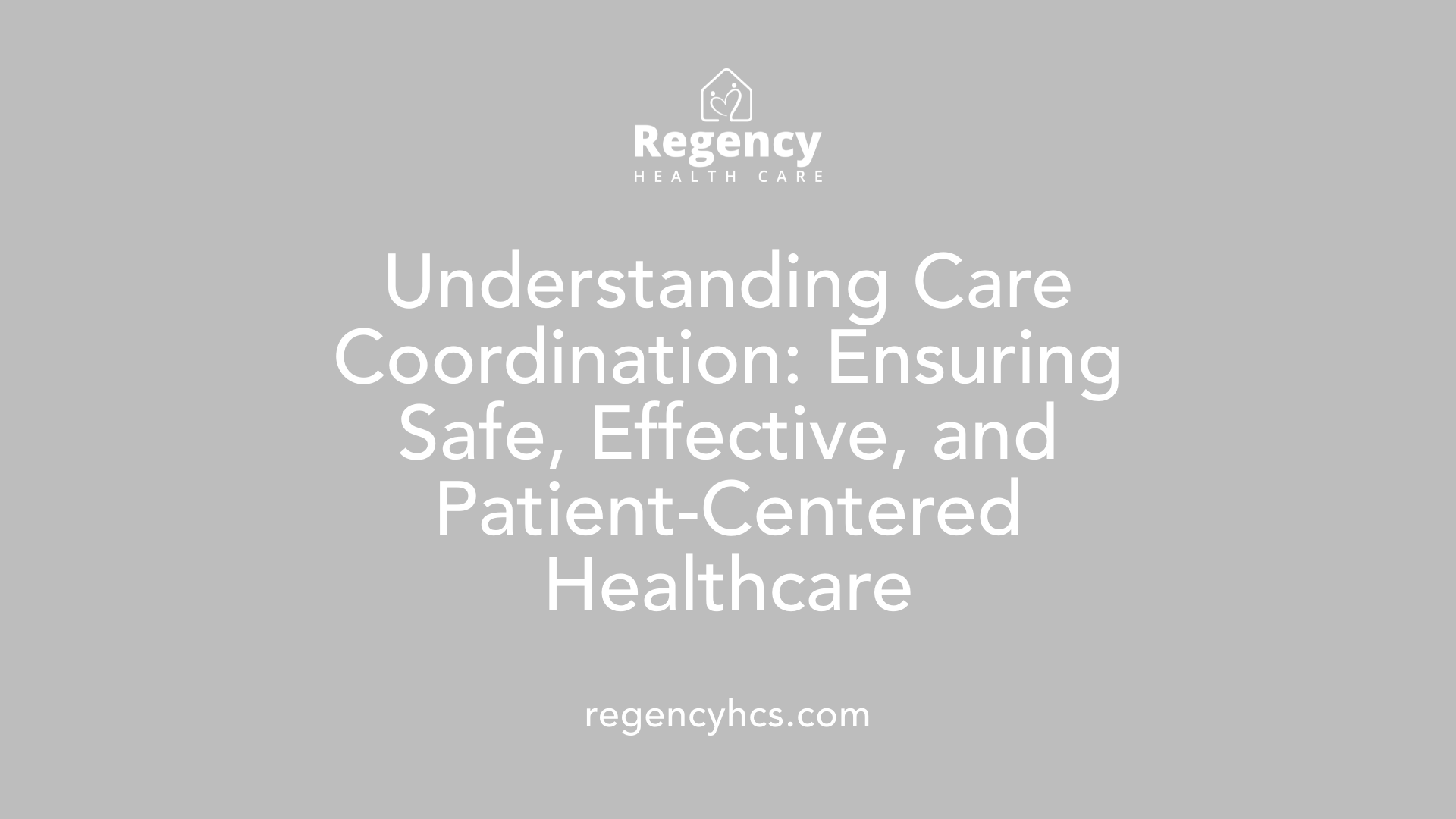
What is care coordination in healthcare?
Care coordination in healthcare is an organized effort to manage and synchronize all aspects of a patient's care across multiple healthcare providers and settings. Its primary goal is to ensure that the care a patient receives is safe, effective, and tailored to individual needs.
This process involves sharing relevant information among providers, assessing the specific needs of patients, and developing personalized care plans. It also supports seamless transitions between different care environments, such as from hospitals to home health care or social services.
Effective care coordination is crucial for preventing fragmentation of services, reducing medical errors, and avoiding redundant or unnecessary tests and treatments. It enhances health outcomes, particularly for patients with complex or chronic health conditions, by ensuring consistency and continuity of care.
Strategies used to facilitate care coordination include the use of electronic health records (EHRs), team-based approaches involving diverse healthcare professionals, and leveraging community resources to address social determinants of health. These tools and methods help improve communication, streamline workflows, and foster collaboration among providers.
Overall, care coordination boosts patient safety and engagement while lowering healthcare costs and minimizing hospital readmissions. It is an essential component of contemporary healthcare that aims to deliver holistic, patient-centered care efficiently.
Roles and Responsibilities of Healthcare Providers
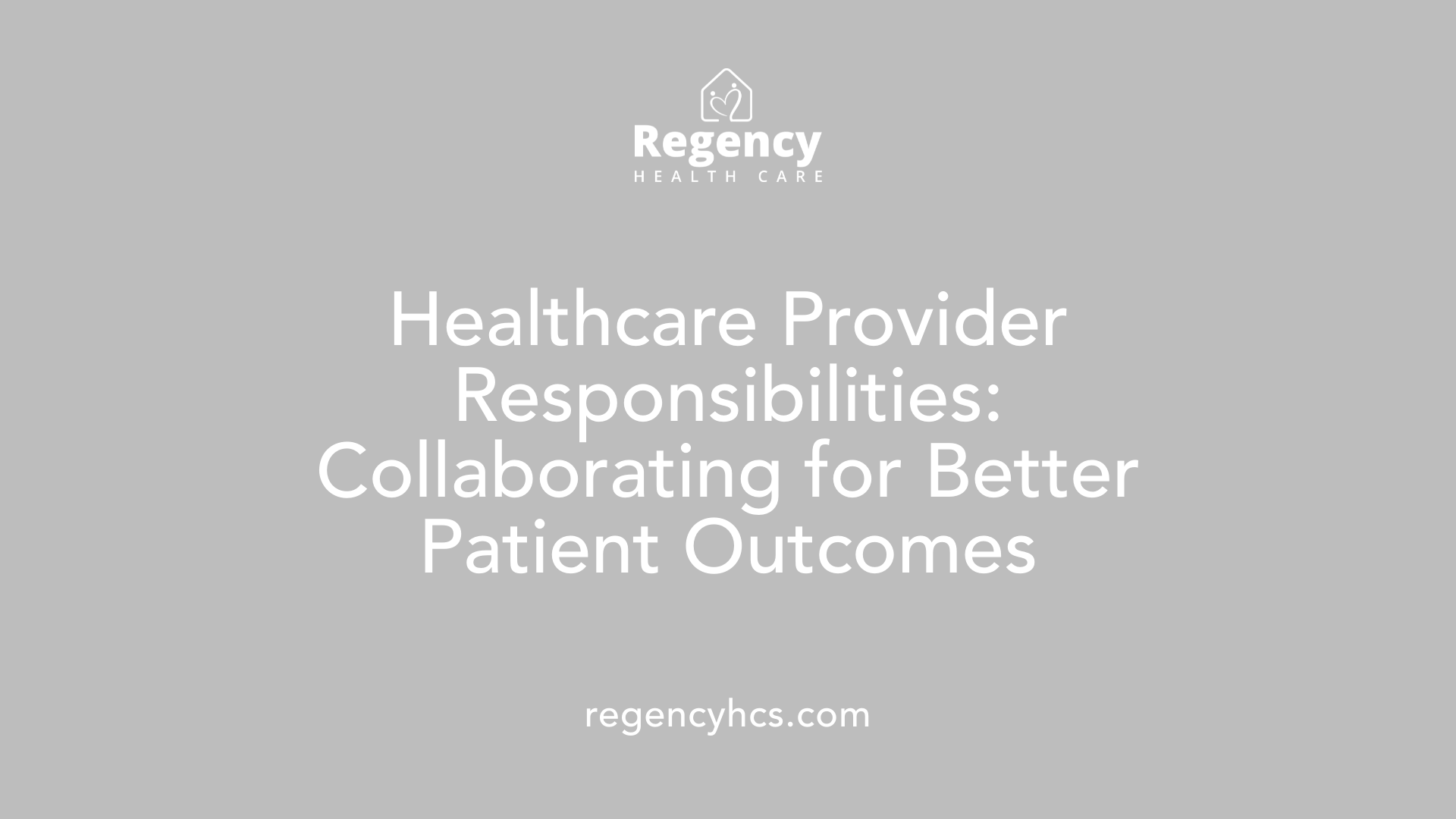
What are the roles and responsibilities of healthcare providers in coordinating patient care?
Healthcare providers play a crucial part in ensuring that a patient receives safe, effective, and personalized care. Their responsibilities include effective communication, sharing vital medical information, and collaborating across multiple disciplines to develop comprehensive care plans. Primary care physicians, specialists, nurses, social workers, and other support staff work together to manage care transitions and coordinate services.
Physicians evaluate and diagnose health conditions, prescribe treatments, and oversee overall patient management. They also communicate with other providers to ensure the care plan aligns with the patient’s needs. Nurses and social workers are responsible for assessing the patient’s condition, monitoring progress, providing education, and connecting patients to necessary resources and social services.
Care coordination involves organizing activities such as relaying medical records, managing referrals, linking social support systems, and arranging care in facilities when needed. Effective use of technology, like electronic health records (EHRs), is vital for seamless information exchange. Participation in team-based models and programs like the Medicare Shared Savings Program helps providers stay aligned and promote coordinated, value-based care.
Overall, providers must strive for clear communication, trust, and collaboration to prevent repeated tests, avoid conflicting treatments, and reduce medication errors. Their concerted efforts are essential for improving health outcomes, enhancing patient safety, and ensuring satisfaction with care. By working together, healthcare teams can address both medical and social needs, especially for patients with complex or chronic conditions.
| Provider Role | Specific Responsibilities | Supporting Tools/Models |
|---|---|---|
| Physicians | Diagnose, prescribe, oversee care, coordinate with specialists | Electronic health records, accountability programs |
| Nurses | Assess, monitor, administer treatments, educate patients | Care management software, communication protocols |
| Social Workers | Link to social resources, provide counseling and support | Social service networks, case management platforms |
| Therapists (Physical, Occupational, Speech) | Assist with mobility, communication, daily activities | Therapy management systems |
Collaboration Between Home Health Professionals and Physicians
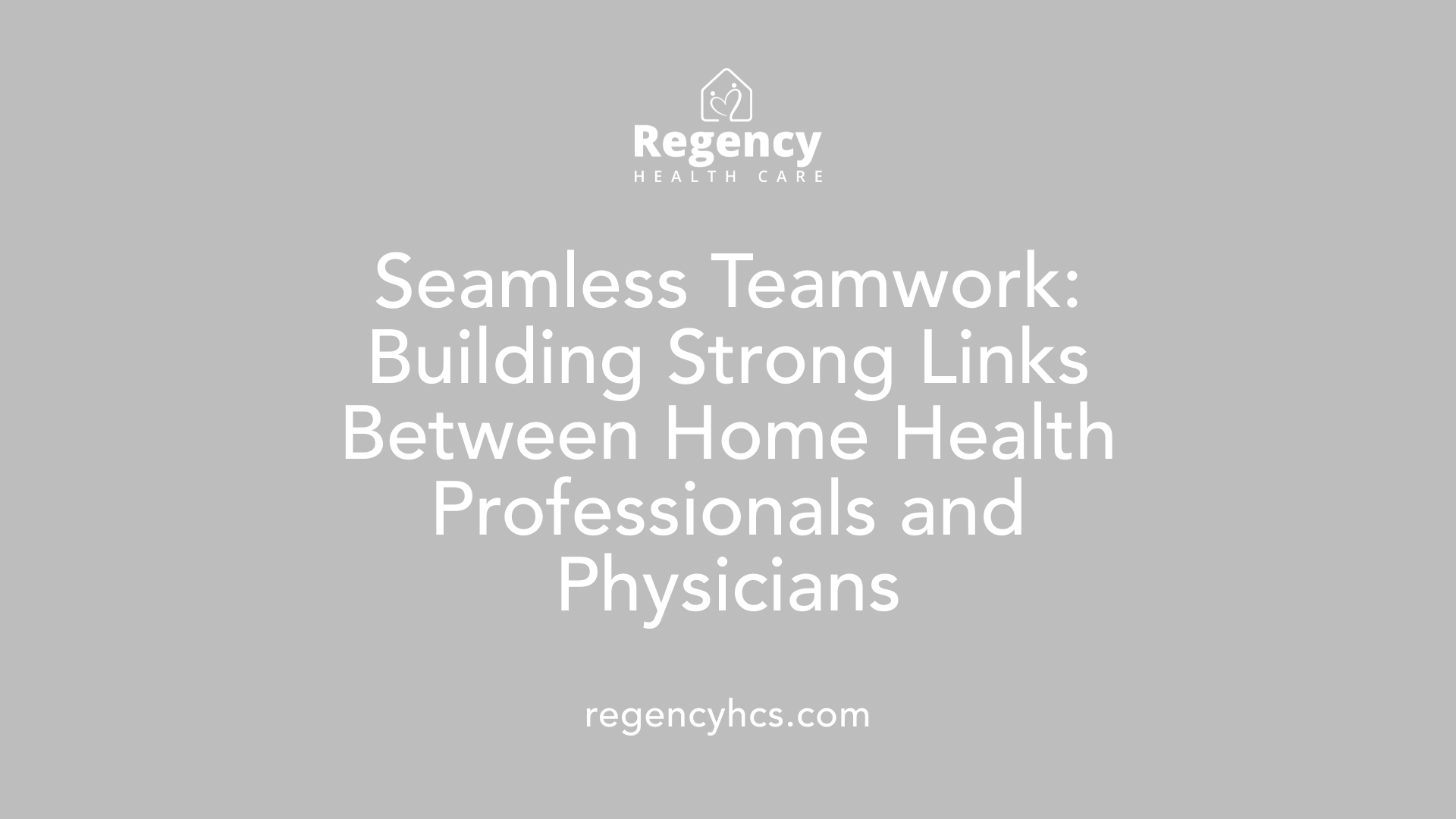
How do home health care professionals and physicians collaborate to coordinate patient care?
Effective collaboration between physicians and home health care professionals is essential for ensuring seamless, safe, and comprehensive patient care. This collaboration hinges on open and clear communication, shared care plans, and regular dialogue. Physicians, often leading the care team, provide diagnoses, treatment orders, and oversee overall management, while nurses, therapists, and social workers implement care and monitor progress.
To streamline efforts, many organizations adopt system-based processes such as electronic health records (EHRs) for real-time information sharing. These systems enable swift updates on patient status, lab results, and treatment adherence. Regular interdisciplinary meetings or case conferences further facilitate coordinated decision-making, helping address complex or evolving needs.
Clarifying roles within the team is crucial. Usually, primary care physicians handle routine care, while specialists step in for targeted interventions. This division minimizes overlaps and enhances efficiency. Education and knowledge transfer sessions improve understanding among team members, ensuring everyone is aligned on care objectives.
Patients are also integrated into the team by encouraging shared decision-making, which boosts trust and engagement. When patients actively contribute their preferences, their adherence improves, leading to better outcomes.
Organizational leadership plays a part by establishing protocols, offering training, and supporting a culture of collaboration. Continuous evaluation of team interactions and patient outcomes helps identify barriers and areas for improvement. Overcoming challenges like fragmented communication or lack of clarity requires ongoing commitment and adaptable strategies.
In summary, coordinated efforts achieved through systematic communication practices, role clarity, team-based interventions, and trust-building lay the foundation for high-quality home health care. These approaches translate into safer, more effective treatment and improved patient satisfaction.
Tools and Strategies for Effective Communication
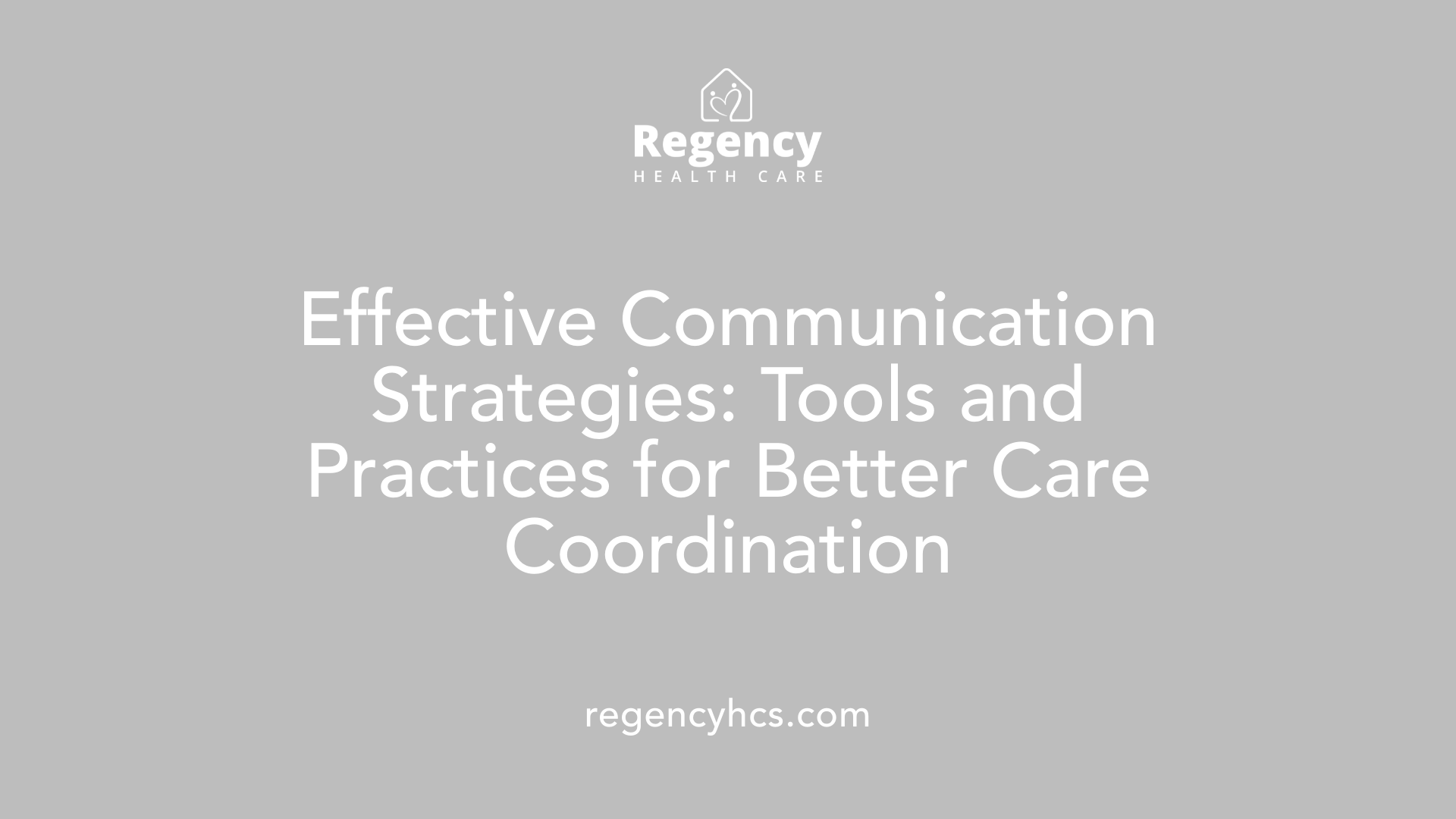 Effective care coordination in home health settings heavily depends on robust communication methods and strategic use of technology. Central to this effort are electronic health records (EHRs), which serve as comprehensive repositories of patient information accessible to all authorized healthcare providers. These digital platforms enable seamless sharing of medical histories, treatment plans, medication lists, and test results, reducing the risk of conflicting treatments and medical errors.
Effective care coordination in home health settings heavily depends on robust communication methods and strategic use of technology. Central to this effort are electronic health records (EHRs), which serve as comprehensive repositories of patient information accessible to all authorized healthcare providers. These digital platforms enable seamless sharing of medical histories, treatment plans, medication lists, and test results, reducing the risk of conflicting treatments and medical errors.
In addition to EHRs, various digital communication tools support real-time information exchange. Management software solutions, secure messaging apps, and video conferencing platforms facilitate ongoing dialogue among team members, particularly important when providers work in different locations or organizational units. These tools help streamline referrals, coordinate appointments, and ensure timely updates about patient conditions.
To maximize efficiency and patient safety, healthcare organizations follow specific protocols for information sharing. Regular interdisciplinary meetings, either in person or virtual, ensure that all care team members are aligned on patient needs and treatment objectives. Also, standardized documentation procedures and shared access policies support consistency and accuracy.
Incorporating structured communication practices, such as checklists and protocol templates, helps maintain clarity and completeness. Furthermore, fostering open communication channels encourages feedback, questions, and shared decision-making among providers.
Using multiple channels—such as email for formal updates, phone calls for urgent issues, and video calls for team discussions—helps accommodate different situations and provider preferences. Training staff in effective communication skills, including active listening and emotional intelligence, enhances collaboration.
Overall, these tools and strategies reinforce a culture of transparency and trust, which are vital for delivering safe, effective, and patient-centered home health care.
Overcoming Challenges in Interprofessional Collaboration
What are common challenges in interprofessional collaboration and how can they be addressed?
Interprofessional collaboration in home health care and other healthcare settings is vital for delivering comprehensive and safe patient care. However, it faces several common obstacles that can reduce effectiveness.
One major challenge is communication barriers. Differences in language, terminology, or communication styles among professionals such as physicians, nurses, therapists, and social workers can create misunderstandings. To overcome this, establishing clear communication protocols and utilizing shared electronic health records can facilitate accurate information exchange.
Role confusion and hierarchical issues are also frequent. When team members are unclear about each other's responsibilities or when power imbalances exist, collaboration can suffer. Promoting common goals and role clarity, along with interprofessional education, helps members understand their roles better and fosters mutual respect.
Resource limitations and systemic challenges further complicate teamwork. These include insufficient staffing, limited time, or inadequate funding, which restrict opportunities for collaboration. Supportive organizational policies, dedicated time for team meetings, and investment in collaboration tools are necessary to mitigate these issues.
Addressing these challenges requires a multifaceted approach:
- Implementing standardized communication practices
- Encouraging ongoing training and shared learning experiences
- Cultivating a culture that values teamwork and respect
- Ensuring strong leadership to support collaboration initiatives
- Integrating workflows that promote regular interaction among providers
In summary, tackling communication barriers, clarifying roles, and managing systemic constraints are essential steps. Doing so can enhance team cohesion, improve patient outcomes, and foster a more effective healthcare environment.
Impact of Care Coordination on Patient Outcomes
What benefits does care coordination offer in improving patient outcomes?
Care coordination significantly enhances healthcare results by ensuring that all providers involved in a patient's care work together seamlessly. It streamlines communication, prevents medical errors, and reduces unnecessary tests and treatments. This integrated approach helps in managing chronic conditions better and supports safe care transitions between different settings.
A major advantage is the reduction in hospital readmissions. When healthcare teams communicate effectively and share important patient information, they can prevent complications that often lead to rehospitalization. As a result, patients experience fewer emergency visits and better health stability.
Patient engagement and satisfaction also improve through coordinated efforts. When patients and their families are included in planning and decision-making, they feel more confident and satisfied with their care. This involvement fosters trust, empowers patients to take active roles in managing their health, and promotes adherence to treatment plans.
Moreover, care coordination minimizes risks such as medication errors, duplicate testing, and care gaps. It promotes safety by ensuring that all healthcare providers have up-to-date information, which facilitates safe prescribing and treatment adjustments.
Overall, coordinated care aligns with value-based healthcare models, leading to higher quality, patient safety, and better health outcomes at a potentially lower cost. This holistic and patient-centered method not only improves overall care delivery but also supports long-term health and well-being.
Models and Frameworks for Integrating Home Care and Physician Services
What models or frameworks exist for integrating home health care with physician services?
Integrating home health care with physician services involves complex coordination strategies and diverse models. One prominent approach is the Patient-Centered Medical Home (PCMH), which focuses on providing comprehensive and continuous care centered around the patient’s needs. PCMH emphasizes team-based care, improved communication, and personalized service plans that streamline interactions across healthcare professionals.
Another well-known framework is the Collaborative Care Model (CoCM). It connects primary care providers with behavioral health specialists through a coordinated team approach. CoCM improves mental health management within the primary care setting and extends into home health by fostering close communication and shared treatment goals.
In addition, specialized care pathways like SBIRT (Screening, Brief Intervention, and Referral to Treatment) and Medication-Assisted Treatment (MAT) standardize interventions for specific health issues. These pathways help ensure consistent, evidence-based treatment delivery across different providers and settings.
To understand and model the systemic nature of care integration, theoretical frameworks such as the Complex Adaptive System (CAS) theory are employed. CAS views health systems as dynamic, nonlinear entities where multiple agents interact and adapt over time. This perspective highlights the importance of flexibility, continuous learning, and responsiveness in care coordination.
Similarly, the Integration Degree Theory offers a structured way to assess the level of integration, from basic cooperation to full collaboration and system integration. It emphasizes components like stakeholder engagement, technological connectivity, role clarity, governance, shared visions, and community participation.
Despite these models and frameworks providing guidance, challenges persist due to the intricate and variable nature of health system integration. Successful implementation often involves strategies such as establishing clear communication channels, leveraging technology for seamless information exchange, defining roles and responsibilities, implementing supportive policies and reimbursement structures, and engaging community resources.
Overall, ongoing development and adaptation of these models are essential to address emerging needs and improve coordination among home health professionals and physicians.
| Model/Framework | Focus Area | Main Features | Challenges |
|---|---|---|---|
| Patient-Centered Medical Home (PCMH) | Comprehensive, continuous care | Team-based, patient engagement, care coordination | Implementation costs, provider training |
| Collaborative Care Model (CoCM) | Behavioral health integration | Multidisciplinary teams, shared care plans | Reimbursement, technology integration |
| SBIRT & MAT Pathways | Specific intervention protocols | Standardized screening and treatment | Resource availability, provider training |
| Complex Adaptive System (CAS) | System dynamics | Nonlinear, adaptable, stakeholder involvement | Complexity understanding, measurement |
| Integration Degree Theory | Level of integration | Stages from cooperation to full integration | Assessment tools, organizational change |
Understanding these models enhances the capacity for effective, patient-centered care that bridges home health and physician services, ultimately improving health outcomes.
Standards and Guidelines for Effective Care Coordination
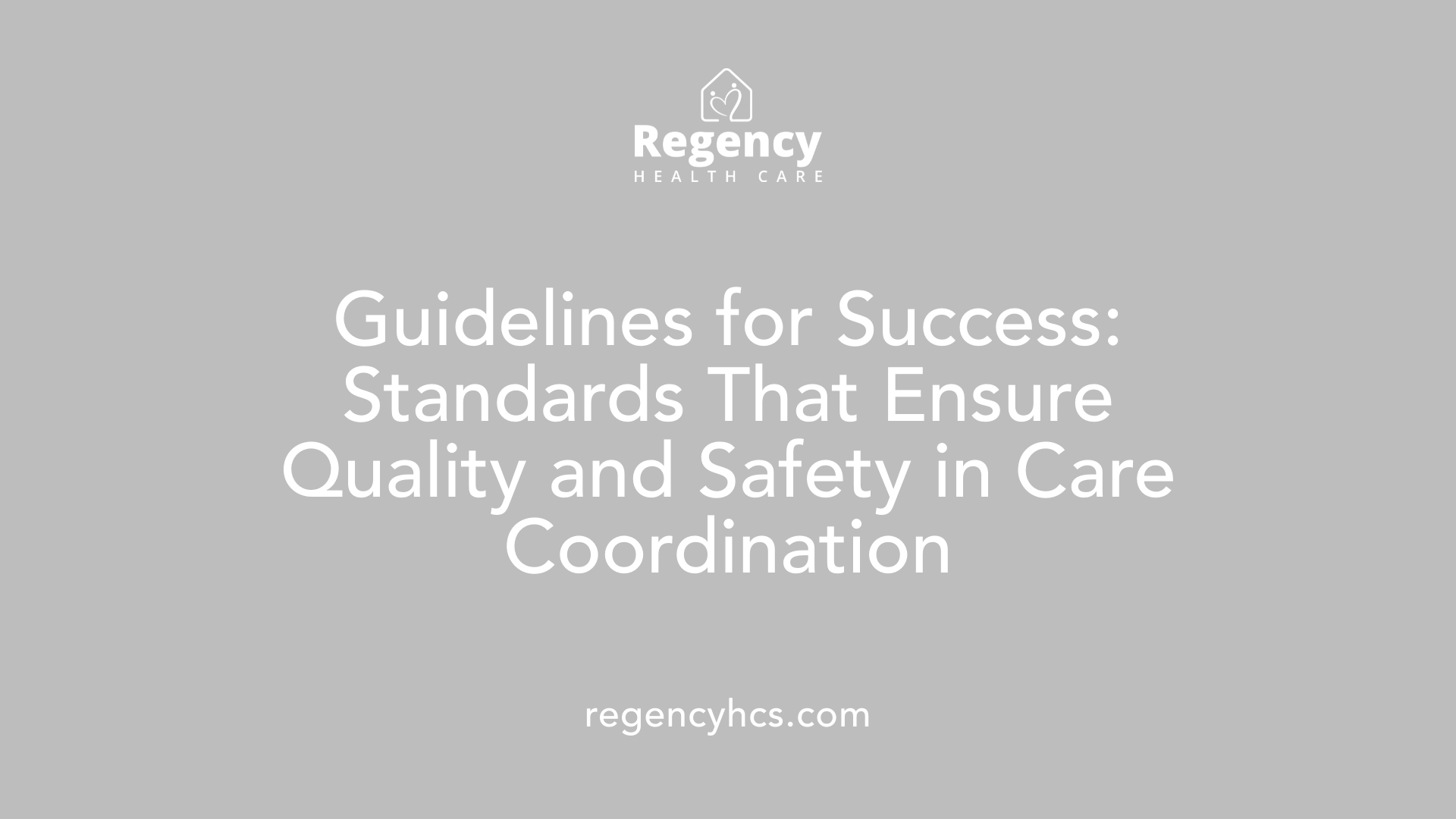
What guidelines and standards help ensure effective care coordination in home health settings?
Effective care coordination in home health environments relies heavily on established standards and guidelines that promote safety, consistency, and quality. One of the central frameworks is provided by the Centers for Medicare & Medicaid Services (CMS), specifically the Home Health Agency Conditions of Participation (CoPs). These regulations require agencies to conduct comprehensive patient assessments, develop personalized care plans, and continually review and adapt care based on updates and patient needs. Regular and clear communication among healthcare providers is mandated to ensure seamless transitions and safe ongoing care.
In addition to CMS guidelines, accreditation bodies like The Joint Commission set rigorous standards emphasizing detailed documentation, multidisciplinary team collaboration, and patient-centered approaches. Their standards stress the importance of involving patients and families in care planning, ensuring that all actions align with the patient's health goals and preferences.
The use of electronic health records (EHRs) plays a pivotal role in fostering efficient communication. EHR systems enable providers across different disciplines to share vital information in real-time, track progress, and modify treatment plans promptly. This technology supports timely interventions and reduces the risk of errors or duplicated efforts.
Further, ongoing staff training and education are crucial. Home health professionals and caregivers need updated knowledge on best practices, regulations, and new tools to maintain high standards of care.
Overall, compliance with federal regulations, adherence to evidence-based practices, and strong interprofessional communication are the pillars that uphold effective care coordination in home health settings. These standards help improve patient safety, treatment quality, and health outcomes.
| Standard/Guideline | Description | Purpose |
|---|---|---|
| CMS Home Health CoPs | Regulations for assessments, care planning, and communication | Ensures safety, quality, and continuity of care |
| Accreditation Standards (e.g., Joint Commission) | Emphasis on documentation, collaboration, and patient involvement | Guarantees high-quality, patient-centered services |
| Use of Electronic Health Records | Real-time data sharing among providers | Facilitates timely interventions and reduces errors |
| Staff Education & Training | Ongoing professional development | Maintains competence and adaptation to new practices |
Staying compliant with these standards supports effective collaboration among providers, ultimately leading to better health outcomes for home health patients.
Enhancing Care Coordination for Better Outcomes
The integration of home health care professionals with physicians hinges on dedicated communication, well-structured processes, and robust standards. Embracing innovative tools such as electronic health records and engaging patients and families as active partners are fundamental. As healthcare continues to evolve, ongoing development of models, guidelines, and best practices will be crucial to overcoming challenges and ensuring that care remains patient-centered, efficient, and safe. Effective care coordination not only improves health outcomes but also enriches the healthcare experience for both providers and patients, ultimately building a more resilient and responsive health system.
References
- 4 Examples of Care Coordination in Home Health
- Care Coordination
- Lessons Learned: Coordinating Physicians and Providers
- 1.3: Who is Part of the Home Health Care Team
- Care Coordination | Agency for Healthcare Research and ...
- Good Working Relationships: How Healthcare System ...
- The role of the home health care physician in mobile ...
- Teaming up: Pointers on Successful Collaboration with ...

The Role of Technology in Modern Patient Care Management
August 6, 2025
Transforming Healthcare Through Innovation and Technology

The Importance of Regular Physical Assessments in Home Health Plans
August 6, 2025
Enhancing Patient Safety and Quality in Home Care

Medicaid Planning for Families: What You Need to Know
August 6, 2025
Essential Strategies for Protecting Assets and Securing Long-Term Care

How to Protect Your Assets While Qualifying for Medicaid
August 6, 2025
Smart Strategies for Safeguarding Wealth in Medicaid Planning

The Role of Cognitive Therapy in TBI Recovery
August 6, 2025
Unlocking Recovery: How Cognitive Therapy Transforms Outcomes in Traumatic Brain Injury

The Long-Term Effects of TBI and How Home Care Helps
August 6, 2025
Understanding the Lasting Impact of Traumatic Brain Injury and the Role of Home Care




